Kiteboard Rental in Maui: Comprehensive Guide
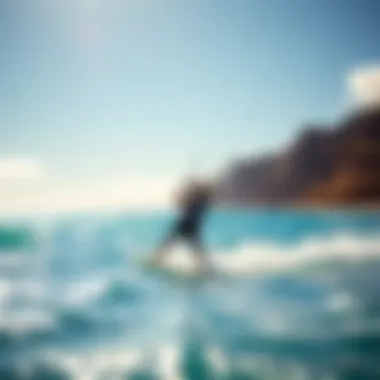
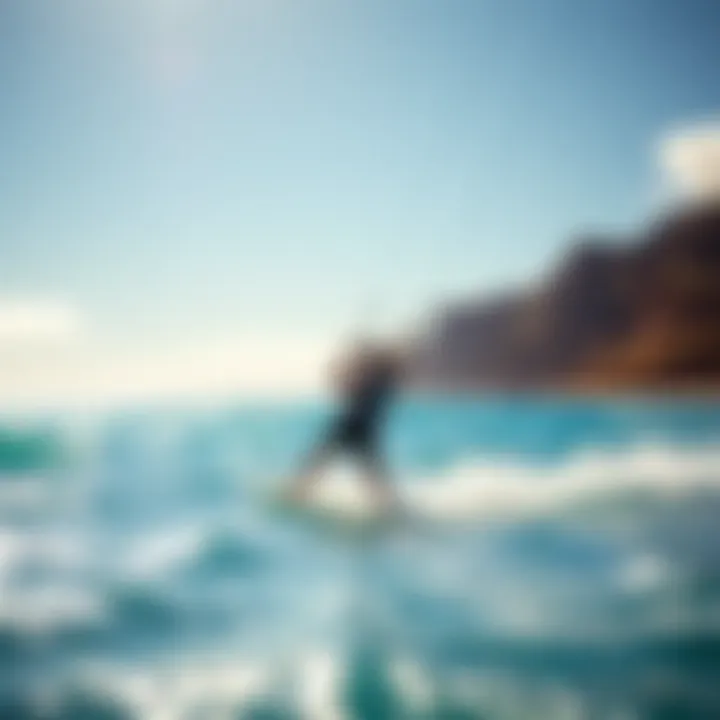
Intro
When it comes to enjoying the thrill of kiteboarding, few places can match the allure of Maui. This tropical paradise offers ideal wind patterns, stunning ocean views, and a vibrant community of enthusiasts. However, for those who aren't ready to commit to purchasing their own gear, renting can be a convenient alternative. This guide takes you through everything you need to know about kiteboard rental in Maui—be it gear selection, safety considerations, or local insights—all aimed at ensuring you maximize your kiteboarding experience.
Gear Selection
Selecting the right equipment is not merely a matter of picking the first colorful kite you see; it requires some knowledge and understanding of your personal needs and preferences. In this section, we’ll break down the crucial aspects of gear selection for kiteboarding, starting from kite types to board choices.
Types of Kites
In Maui, you can find a variety of kites suited for different wind conditions and rider skill levels. The two main types include:
- Inflatable Kites: These are the most common choice among riders. They offer a great balance of power and stability, making them suitable for various wind conditions. Their construction allows for easy inflation, which makes setup quick and straightforward.
- Foil Kites: A bit more niche, these kites are known for their efficiency in light winds. They are not as popular for beginner rentals but can be found at specialized shops. Their design consists of a series of air chambers that catch the wind, allowing for smooth and consistent rides.
When you're perusing rental options, consider how the kite's size correlates to your weight and the wind conditions of the day. Kites come in various sizes, and a seasoned instructor can help you figure out the right fit.
Choosing the Right Board
Choosing the board is equally important, as it affects your control and responsiveness on the water. The most common types of kiteboards are:
- Twintip Boards: These are versatile and ideal for beginner to intermediate riders. They have a symmetrical design that allows for switch riding and easier upwind performance.
- Directional Boards: Designed more for surf-style riding, these boards work best when the rider is more advanced, particularly for backside riding. They also perform well in larger waves, giving a different feel altogether than twintips.
While selecting your board, think about where you plan to ride. If you're hitting the waves, a directional board can make a world of difference. Local shops often have experienced staff who can recommend a board based on your skill level and the conditions on any given day.
Skill Development
Now that you have your gear sorted, the next step is honing your skills. Whether you are a first-timer or looking to sharpen your techniques, Maui offers a conducive environment for growth.
Essential Techniques
A core foundation of kiteboarding involves mastering some essential techniques. These include understanding how to launch and land your kite safely, steering it with the right precision, and adjusting your body position in response to wind changes. Remember, kite control is fundamental—getting it right can make your ride enjoyable and safe.
Progression Tips
To progress faster, it helps to focus on specific goals in your riding. Practicing transitions—moving between different stances or directions—can enhance your overall proficiency. Moreover, participating in local lessons can provide structured guidance and feedback, which is invaluable for refining your abilities.
"The joy of kiteboarding lies in the dance between you, your kite, and the wind; mastering this interaction takes time, but the vibrant Maui backdrop makes every moment worth your effort."
In addition, following weather forecasts closely can improve your riding experience and safety. Websites like Windy and Maui Weather provide up-to-date information about wind conditions and tide charts.
As you embrace kiteboarding in Maui, remember that it's a journey that thrives on experience. Each ride offers lessons, and every session adds to your skill set. The island’s electric atmosphere and friendly community only enhance this adventure, helping you to ride the waves like a pro.
Ending
Kiteboard rental in Maui provides not only the thrill of adventure but also a chance to be part of a lively community. Whether you're just starting or looking to take your riding to a new level, carefully selecting your gear and focusing on skill development will make your time on the island memorable. Happy kiting!
Understanding Kiteboarding in Maui
Kiteboarding in Maui is not just a recreational pastime; it’s a vibrant blend of skill, thrill, and the majestic natural environment. The island has established itself as a prolific hub for kiteboarding enthusiasts, attracting both local and international riders. Understanding kiteboarding in this context encompasses various elements like the unique geography, climatic patterns, and cultural significance of the sport. This insights will provide riders with a rounded comprehension of what they can expect when they dive into this exhilarating sport in Maui.
Overview of the Kiteboarding Scene
Maui's kiteboarding scene is diverse and continuously evolving. With stunning beaches, crystal-clear waters, and a welcoming atmosphere, the island promises an exhilarating experience for everyone, from beginners to seasoned veterans. The community here thrives on connection and support, often sharing advice and passion for the sport.
The popularity of kiteboarding is fuelled by exclusive events, competitions, and local gatherings. Spots like Kanaha Beach and Kite Beach play pivotal roles in this ecosystem, where riders converge, learn, and share their kiteboarding adventures. Apart from the thrill of riding, this scene fosters camaraderie and learning. Newcomers often find mentors amongst seasoned riders, absorbing firsthand the nuances of the sport.
Key Aspects of Maui’s Kiteboarding Scene:
- Popular Beaches: Kanaha Beach, Kite Beach, and the North Shore are key locales that draw kiteboarders.
- Events and Competitions: Regular kiteboarding competitions create an electrifying atmosphere that motivates riders.
- Community Engagement: Local clubs and workshops often host events, promoting skill development and network building.
Maui's Unique Wind Conditions
What sets Maui apart from other kiteboarding destinations is its exceptional wind conditions. The consistent trade winds that sweep through the island create predictable patterns, ideal for kiteboarders. The winds tend to blow at reasonable speeds, usually ranging between 15 to 25 knots, making them accessible for all skill levels.
Understanding these winds is crucial for any kiteboarder. Knowledge about wind direction, intensity, and the accompanying ocean currents can significantly impact a rider’s experience. For instance, the winds often pick up in the afternoon, providing the perfect conditions for an adrenaline-packed session. Kiteboarders need to be attuned to the wind patterns, which can change both quickly and unexpectedly.
Key Characteristics of Maui's Wind:
- Trade Winds: Predominantly from the east and northeast, these breezes ensure a consistent ride.
- Seasonal Variations: Wind strength can vary throughout the year, necessitating ongoing observation and adaptation.
- Interaction with Topography: Nearby mountains and valleys impact wind flow, creating dynamic conditions at various locations on the island.
"Kiteboarding in Maui teaches you not just to ride, but also to read the natural rhythm of the environment—knowing when the wind will guide your board beneath your feet or when to wait for a better gust."
In sum, recognizing the intricacies of Maui's kiteboarding scene and its unique wind conditions is vital for anyone looking to take full advantage of what the island has to offer. Getting familiar with local conditions not only enhances the overall experience but also ensures that riders can navigate safely and enjoyably amid Maui's captivating landscapes.
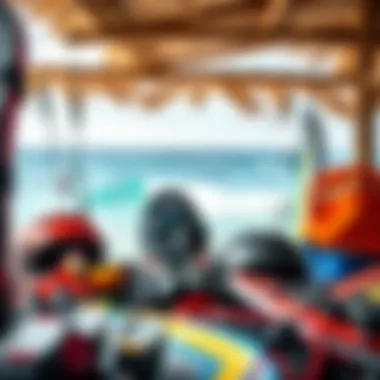
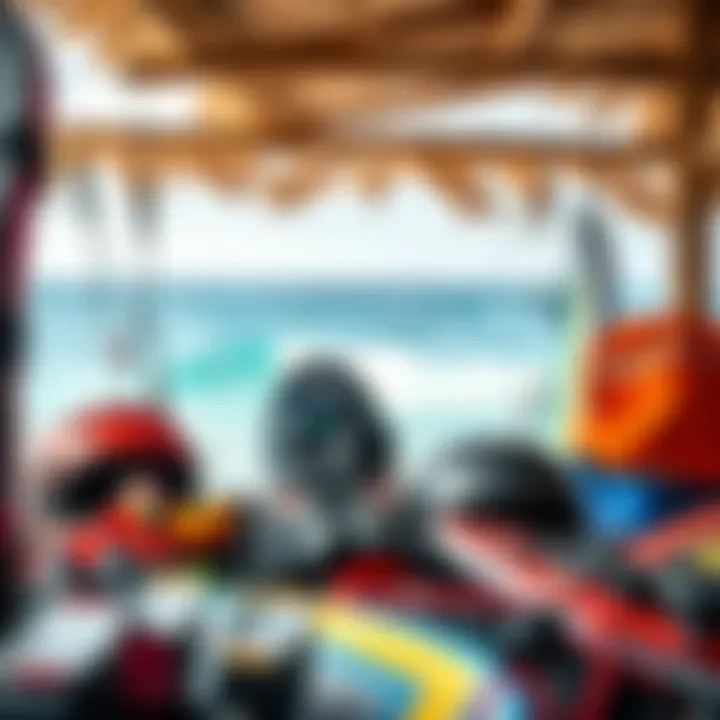
Kiteboard Rental Options
When embarking on a kiteboarding adventure in Maui, understanding the rental options available is crucial for both novices and experienced riders alike. Maui’s vibrant kiteboarding community offers a variety of rental choices, each with its unique benefits and considerations. This section aims to guide aspiring kiteboarders through the options, helping them make informed decisions that will enhance their overall experience.
Local Rental Shops
Local rental shops serve as a hub for kiteboard enthusiasts looking to gear up before hitting the stunning Maui waves. These shops provide the hands-on aspect that online services often can’t match. When you step into a local shop, you can physically inspect the equipment, ask questions to knowledgeable staff, and receive tailored recommendations based on your skill level and needs.
Renting from local shops also benefits the island’s economy and helps maintain the community’s rich kiteboarding culture. Many shops host events, workshops, and social gatherings, allowing riders to connect and share experiences. Additionally, here are a few key advantages of renting locally:
- Personal Interaction: Engage with experienced staff who can provide insights and tips only a local would know. They’ll often share the best spots depending on the day’s wind conditions and tides.
- Flexibility and Convenience: Most local shops offer hourly rentals, so if the wind shifts or the weather changes, adjustments can be made on the fly. This means less time worrying about commitments and more time enjoying the water.
- Enhanced Support: Should you face equipment issues on the water, you'll be closer to a service point for prompt assistance, ensuring your day doesn’t end prematurely.
Ultimately, local rental shops provide a richer, community-focused experience, which can foster friendships and allow people to enjoy the sport together, something that remote services might lack.
Online Rental Services
On the other end of the spectrum, online rental services offer a convenience that’s hard to ignore, appealing to tech-savvy individuals who prefer to plan ahead. Many reputable websites allow you to browse various equipment options, check availability, and even compare prices before making a decision. This can save time, especially for those traveling from afar who want a seamless experience upon arrival.
Some of the significant benefits of opting for online services include:
- Comparative Shopping: Browse different sites to find the best rates or package deals. This can be especially beneficial for budget-conscious riders looking to stretch their dollars.
- Booking in Advance: Locking in a rental beforehand ensures that the equipment you want is reserved for you upon arrival. This can be particularly important during peak seasons when demand is high.
- Broader Selection: Online platforms often feature a wider range of brands and gear that might not be available at local shops. This gives you the opportunity to try a variety of gear that suits your style, from performance boards to comfortable kites.
However, there are some caveats to consider. You miss the face-to-face interaction with local experts who can provide personalized advice, and there might be limited support during emergencies. Therefore, weighing the pros and cons of local versus online rentals is vital to ensuring a successful kiteboarding trip.
"Whether you go local or online, knowing what to look for in gear is just as important as where you choose to rent it. Good equipment is the foundation of every great session."
Evaluating Rental Equipment
When embarking on the adventure of kiteboarding in Maui, one of the crucial steps is evaluating the rental equipment you'll be using. This can't be brushed aside, as the right gear not only impacts your performance but also affects your safety and overall enjoyment on the water. Understanding the different types of kiteboards available and knowing how to size them correctly makes a significant difference in your riding experience.
Types of Kiteboards Available
Maui boasts a variety of kiteboards that cater to different riding styles and skill levels. Generally, you will find the following types:
- Twin-Tip Boards: Most popular among beginners and intermediates, these boards are symmetrical and can be ridden in both directions. Their versatility makes them great for flat water and small waves.
- Directional Boards: These are designed specifically for wave riding. They have a unique shape, usually more elongated and pointed, allowing better control in the surf. However, they require a bit more skill to ride effectively.
- Foil Boards: A newer type of board, foils lift above the water, reducing drag and allowing for smoother rides even in lighter winds. These are typically suited for more advanced riders due to their unique handling characteristics.
- Race Boards: If speed is what you’re after, these boards generally have a longer and narrower design for maximizing performance in races.
Choosing the right type of board directly influences your comfort level and capability on the water. A proper fit can improve your maneuverability, shredding technique, and ability to handle the specific conditions you might encounter in Maui’s waters.
Kite Sizing Considerations
When it comes to kite sizing, it’s akin to finding that perfect pair of shoes. Choose poorly, and you’ll know it in no time. Several factors contribute to determining the right kite size for your session:
- Rider Weight: Generally, heavier riders need larger kites to generate enough power for lift and control. If you weigh 200 pounds, for instance, you may look for kites in the 12-14 meter range for average wind conditions.
- Wind Conditions: Maui’s winds can range from gentle breezes to stronger gusts. Light winds call for bigger kites, while stronger winds are better suited for smaller kites. It's a good idea to check forecasts to avoid frustration on the water.
- Skill Level: Beginners often benefit from larger kites which give more lift and power, but this can also make for a trickier learning curve. More experienced riders may lean toward smaller kites to enhance their control and maneuverability.
Ultimately, a key part of enjoying your rental experience is ensuring that the equipment fits well with your riding style and local conditions.
Remember, renting the right gear is not just about fun; it's about safety and finding your groove in the waves. Don't hesitate to ask for guidance when making your choices.
Arming yourself with a bit of knowledge about these aspects not only enhances your enjoyment but it also ensures that you're prepared and safe on the waters of Maui.
Pricing and Packages
Understanding the pricing and packages for kiteboard rentals is essential for anyone looking to enjoy the thrilling sport in Maui. The costs can vary widely based on the rental shop, the type of equipment, and the duration you plan to rent. Having a clear grasp of what you might expect financially can make your experience seamless and enjoyable. Moreover, selecting the right rental package can save you more than just a few bucks; it can also enhance your time on the water by addressing your specific needs and preferences.
Hourly vs. Daily Rental Rates
When it comes to kiteboarding in Maui, choosing between hourly and daily rental rates can be perplexing. Here’s a quick breakdown:
- Hourly Rental Rates
- Daily Rental Rates
- Ideal for beginners who want to test the waters before committing to a full day.
- If you know the wind won’t cooperate for long, this option can be cost-effective.
- Often, local shops offer hourly rates within the range of $50 to $100, depending on the equipment type.
- If you’re a seasoned rider or plan to spend a significant amount of time on the water, daily rentals typically provide better value.
- Rates generally range from $100 to $200 for a full day, and equipment quality tends to be higher.
- Many rental shops will include perks like free gear exchanges throughout the day, giving you the chance to adapt to changing conditions.
The math is rather simple: Hourly rates can be more suitable for a short stint, whereas daily rates generally cater to those looking for longer riding experiences. Consider your schedule, abilities, and wind conditions before making a choice.
Long-Term Rentals and Discounts
For those planning an extended stay in Maui, exploring long-term rental options can lead to significant savings. Local rental shops often offer enticing discounts for rentals that last longer than a few days. Here’s what you should keep in mind:
- Weekly Rentals
- Monthly Rentals
- Loyalty Programs
- Many shops provide weekly deals that can reduce costs by as much as 15-30% compared to daily rates.
- Long-term rentals often include perks, such as customized gear adjustments and maintenance.
- Perfect for long-term visitors or even residents, where prices can be negotiated further to accommodate extended usage.
- Monthly rentals may also provide you with gear storage options, keeping your equipment safe and accessible.
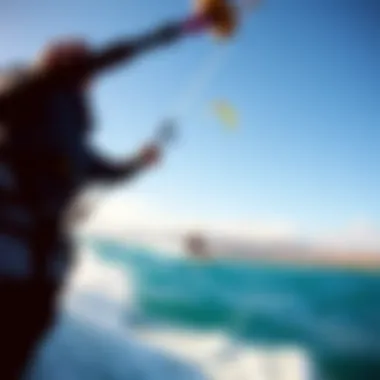
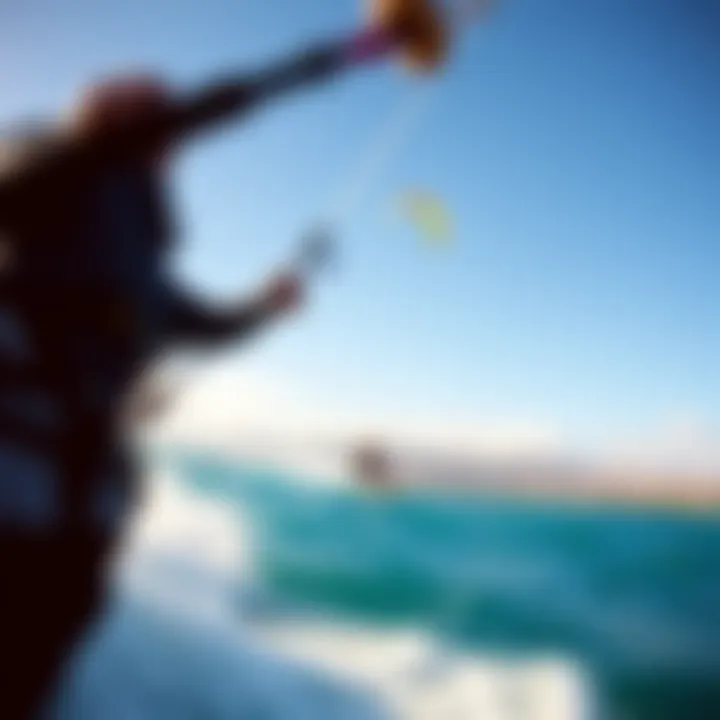
- Some businesses reward return customers with discounts or free gear. Building rapport with local shops may lead you to great deals if you frequently kiteboard.
In summary, understanding how pricing structures work for kiteboard rentals can make a world of difference in your Maui experience. Choosing the right rental option, whether it's hourly, daily, or long-term, will allow you to maximize both your time and resources. Don't hesitate to ask rental shops about any hidden fees or special deals that might not be prominently advertised.
Safety Considerations
Kiteboarding is a thrilling sport that offers adventure and excitement, but it also comes with its share of risks. Understanding safety considerations is paramount, especially when renting equipment and hitting the waves in Maui’s beautiful but challenging waters. Prioritizing safety isn’t just about preventing accidents; it's about ensuring a positive experience for everyone involved. When embarking on this kiteboarding journey, it's wise to keep a few key points in mind.
Understanding Local Safety Protocols
Maui’s wind and water conditions can change rapidly, so it’s crucial to familiarize yourself with the local safety protocols before you start your kiteboarding adventure. Each beach may have its own rules, which are informed by the unique geographical and meteorological conditions.
First and foremost, consult with local instructors or rental shop staff. They’re often well-versed in the latest safety measures and wind forecasts. You can find guidelines, such as no-kite zones and designated launch areas, helpful in ensuring both your safety and the safety of others.
- Always check for updated local advisories before heading out.
- Stay away from rocky or reef areas, as they can pose significant dangers.
- Pay attention to the behavior of experienced kiteboarders; they often have the best idea about current conditions.
Additionally, it’s good practice to carry a communication device—like a phone or a two-way radio—in case of emergencies. It’s also handy to share your planned session with someone on land, creating an added layer of security.
Essential Safety Gear
When kiteboarding, wearing the right safety gear is not just advisable; it's essential. While you might think the thrill comes from the ride itself, being properly outfitted can make all the difference in a sticky situation.
Here are some must-have items:
- Helmet: Protecting your head from unexpected falls or collisions is crucial.
- Impact Vest: These provide extra cushioning during crashes and can aid in buoyancy.
- Safety Leash: This prevents your kite from flying away uncontrollably. Make sure your equipment includes one that meets safety standards.
- Personal Flotation Device (PFD): An often-neglected item, a PFD can keep you afloat while you regain your bearings after a spill.
It’s also wise to carry a first aid kit that can be accessed easily. By arming yourself with the right gear, you ensure that the thrill of the ride doesn’t come at the cost of your safety. After all, nothing ruins a good session like reckless behavior or inadequate preparation.
"Safety first is safety always."
Choosing the Right Location
When it comes to kiteboarding in Maui, the choice of location is paramount. The island offers a plethora of spots, each with its unique characteristics that cater to different skill levels and preferences. Choosing the right place not only enhances your riding experience but also ensures safety and access to favorable wind conditions. Different beaches and locations can change your perception of kiteboarding, adding to the thrill or causing unnecessary frustration.
Popular Kiteboarding Spots in Maui
Maui boasts a variety of popular kiteboarding spots, each providing diverse conditions to suit different experiences:
- Kanaha Beach Park: Known for its consistent winds and spacious areas, this is one of the most frequented locations for all skill levels. Surrounded by lush landscapes, it’s perfect for those who wish to ride in a scenic setting.
- Kite Beach: Located near the famous Hookipa Beach, it presents more challenging conditions ideal for intermediate and advanced riders. The waves here can be larger, providing an exhilarating ride for seasoned kiteboarders looking to push their limits.
- Maui’s North Shore: With its varying wind patterns and surf conditions, the North Shore is not for the faint of heart. It can offer tricky gusts, making it essential for experienced riders who know how to gauge the shifts in winds and surf.
- La Perouse Bay: This spot is less crowded and offers a more serene experience. The waters are typically a bit flatter, making it an excellent choice for beginners eager to learn in a controlled environment.
Each location not only provides a different riding experience but also comes with its own set of unwritten rules and cultural nuances that riders should be aware of. Familiarizing oneself with these can elevate one’s ability to navigate the area effectively.
Assessing Skill Level Appropriateness
Understanding your skill level is critical when selecting a kiteboarding location. Different spots can either facilitate growth in your kiteboarding abilities or set you up for potential mishaps. Here are some considerations:
- Beginner: Look for locations with shallow waters and gentle winds, such as Kanaha Beach. The forgiving conditions allow for easier handling of the kite and board, giving novices a chance to get comfortable without overwhelming challenges.
- Intermediate: For those who have mastered the basics but are not yet ready to tackle high waves, choose locations that offer moderate gusts and small to medium-sized waves, like Kite Beach. This helps bridge the gap between beginner and advanced riding.
- Advanced: Seasoned kiters should seek out spots like the North Shore where the challenges are abundant, including larger waves and tricky wind conditions. In these environments, advanced techniques can be honed and new skills developed.
"A proper understanding of where and when to kiteboard is like picking the right spice for your favorite dish—the right balance can make all the difference."
For further resources, you might check out Maui Kiteboarding Facebook Group or refer to articles on Wikipedia's Kiteboarding Page.
With so much variety, choosing the right location in Maui can be the key to unlocking the full potential of an exhilarating kiteboarding experience.
The Rental Agreement Process
A rental agreement for kiteboarding equipment in Maui is more than just a formality; it lays the groundwork for your entire experience on the water. Understanding this process is crucial for both seasoned kiteboarders and newcomers alike. A well-crafted agreement helps clarify expectations and protects both the renter and the rental provider. Taking time to grasp its elements can save you from unexpected surprises, ensuring a smooth ride in the waves.
Reading the Fine Print
When it comes to rental agreements, the fine print deserves your full attention. Often overlooked, this section can be the heart of your agreement. It discusses critical details like the condition of the equipment, liability waivers, and operational guidelines.
Key Points to Consider:
- Condition of Equipment: Ensure that the rental shop has documented the initial condition of the gear. Any pre-existing damages should be noted to avoid disputes when returning the equipment.
- Liability Waivers: Many agreements include liability clauses that state you may be responsible for any damages incurred while using their equipment. It’s essential to understand what this entails.
- Operational Guidelines: Familiarize yourself with the rules for using the equipment, including where and when you can kiteboard. Sometimes there are restrictions based on local regulations or environmental concerns.
Reading these clauses thoroughly can empower you. If anything feels unclear, don’t hesitate to ask the rental staff for clarification. After all, it’s better to speak up than to be caught off guard later.
Deposit and Insurance Requirements
Before you take the plunge and head out to ride the breezy waves, you’ll often encounter deposit and insurance policies in the rental agreement. These components play a pivotal role in the overall rental experience.
Deposit Requirements:
Most rental places will require a security deposit. This ensures that the equipment is returned in good condition and provides the rental company with some assurance against potential damages

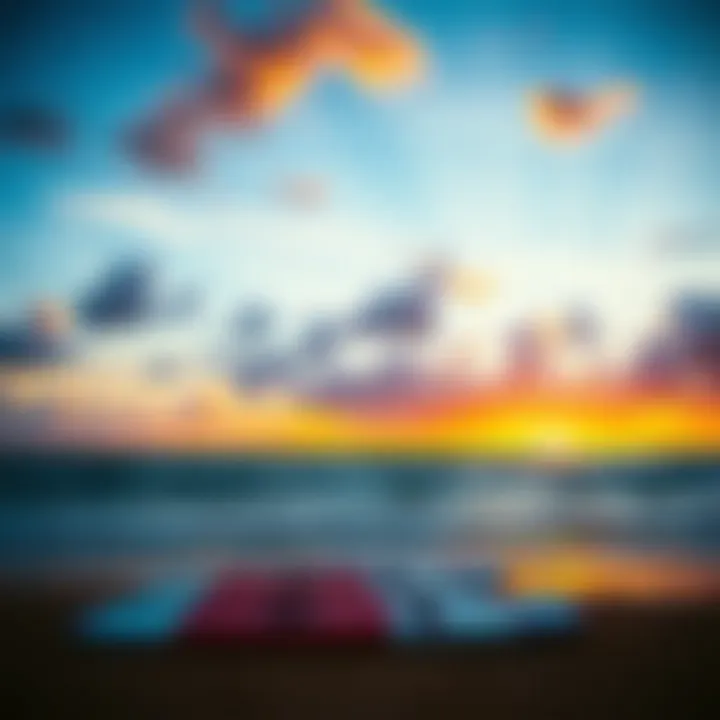
- Amount: The deposit can range significantly, depending on the value of the gear. Be prepared to part with this amount temporarily.
- Return: Understand the conditions under which the deposit will be returned. Often, you'll need to meet specific criteria like returning equipment on time and in the same condition you received it.
Insurance Considerations:
Insurance is a crucial facet when renting kiteboarding equipment.
- Rental Insurance: Some companies offer rental insurance at a nominal fee, which covers damages and theft. Consider this option; it could save you from bearing the full financial brunt of an unfortunate incident.
- Personal Insurance: Check your personal insurance policies. Some may extend coverage for rented equipment. However, the specifics can vary, so clarity is key.
While tackling the rental agreement process may seem daunting at first, taking it step by step ensures that you are well-prepared. Understanding the nuances involved not only elevates your kiteboarding experience but also infuses a sense of security. This knowledge will allow you to focus on what truly matters: enjoying the thrill of kiteboarding in the stunning waters of Maui.
Tip: Always keep a copy of your rental agreement in a safe place. In any disputes, this document can protect your interests and clarify the terms you agreed to.
Maximizing Your Rental Experience
Kiteboarding in Maui isn’t just about having the right equipment. It’s also about making the most of the entire experience. Whether you're a first-time rider or a seasoned pro looking to refine your skills, maximizing your rental experience is crucial. The waters of Maui are inviting, but without guidance and community, your time might not be as fulfilling. Here are key elements to consider to ensure you leave with memories that’ll last a lifetime.
Learning from Instructors
Taking to the water without some form of guidance can be daunting and, let’s be honest, potentially dangerous. That’s where professional instructors come into play. Think of them as your lifeline amidst the waves.
Most rental shops have partnerships with certified kiteboarding instructors who can offer lessons tailored to your skill level. Here’s how you can benefit from their expertise:
- Skill Assessment: An instructor can evaluate your skills before sending you out on the water, helping to tailor the experience to your level.
- Safety Protocols: They share essential safety practices that are unique to the local conditions.
- Technique Improvement: It’s one thing to ride, but learning proper techniques can enhance your performance dramatically. Instructors often provide specific drills that can push you to the next level.
When looking for a shop, inquire specifically about their lessons, rates, and instructor qualifications. Personalized attention in a small group setting often yields the best results.
Connecting with the Local Kiteboarding Community
Kiteboarding in Maui is not just a sport; it’s a culture. The local kiteboarding community is vibrant and welcoming, providing a network of enthusiasts who share a common passion. Here’s how to tap into this invaluable resource:
- Join Local Events: Participate in community gatherings, or events organized by local shops. These gatherings often have social elements where you can meet fellow kiteboarders.
- Social Media Groups: Platforms like Facebook and Reddit host groups dedicated to kiteboarding in Maui where you can ask questions, seek advice, and even find riding partners.
- Word of Mouth: Don’t hesitate to strike up conversations with other kiteboarders at the beach. You’ll often find that sharing experiences leads to richer insights and plenty of local tips, whether it's about the best spots or the most favorable wind conditions.
Environmental Considerations
Kiteboarding, with its exhilarating rush and serene connection to nature, also carries an inherent responsibility towards the environment. As this sport gains traction in Maui, understanding environmental considerations becomes paramount. With thriving ecosystems and delicate marine habitats dotting the coastline, it is crucial for both enthusiasts and professionals to adopt practices that protect these cherished environments.
Responsible Kiteboarding Practices
When caring for the beaches and waters that we so love to use, it's vital to follow certain practices that can minimize our impact. Here are a few guidelines to consider:
- Stay within Designated Areas: It’s important to adhere to local regulations by kiteboarding only in approved zones. Not only does this protect wildlife, it also keeps you safe from hazards.
- Pick Up After Yourself: Trash falls into the category of no-brainer actions, but it’s easy to forget in the heat of the moment. Always take your refuse with you and assist in beach clean-ups when possible.
- Be Mindful of Wildlife: Parts of Maui's coast harbor nesting sites for sea turtles and birds. Keep your distance and if you encounter any wildlife, avoid startling them. A little respect goes a long way.
- Use Eco-Friendly Gear: Some rental shops may offer sustainable equipment options. Trustworthy brands often consider the planet in their production processes. Opt for these when possible.
Bear in mind that while kiteboarding is thrilling, it also places us directly into natural settings that require care and caution.
Impact on Local Ecosystems
Kiteboarding has the potential to disrupt delicate marine ecosystems. Researching and understanding the impact we can have is essential:
- Coral Reefs Damage: Frequent traversing over reefs can harm coral structures, vital for marine life. Choose entry points away from sensitive areas to avoid propelling sand or debris onto coral heads.
- Invasive Species: Some kiteboarders might unknowingly introduce invasive plant species to new environments via their gear. Rinse equipment thoroughly before moving between spots to curb this.
- Propeller Disruption: The vibrations and disturbances caused while kiteboarding can affect fish and other aquatic animals, altering their behavior and breaking the natural calm.
"The ocean doesn’t belong to us; we belong to the ocean. Our actions today dictate the health of tomorrow’s reefs."
By emphasizing these practices and understanding our impacts, kiteboarding can remain a sustainable activity that contributes positively to Maui's stunning coastal environment.
Post-Rental Considerations
After wrapping up an exhilarating kiteboarding session in the beautiful waters of Maui, there are still a few important things to keep in mind before you part ways with your rented gear. These post-rental considerations not only aid in a smooth return process but also help maintain good relationships with rental shops and the local kiteboarding community.
Returning Equipment
Returning equipment might seem straightforward, yet there are several nuances to consider. Upon returning, you should first inspect the gear for any damages or wear that might have occurred during your usage. This not only shows integrity but also prevents misunderstandings. If you notice anything off, it's better to discuss it right then and there.
Most rental shops will appreciate when renters take care in handling their equipment. After all, these places depend on the quality of their gear for their reputation. Clean the equipment before returning it; this small act goes a long way. Remember, sand and saltwater can be corrosive. If you can, give the kite and board a quick rinse before heading back.
Some shops may have particular return protocols, such as specific time slots or designated drop-off points. It's a good practice to familiarize yourself with these requirements beforehand to avoid any last-minute complications.
Here are a few tips on how to ease the process of returning equipment:
- Inspect the gear together: Ask a staff member at the rental shop to check the equipment with you. This can help ensure that you both are on the same page regarding the condition of the gear.
- Arrive early: Don’t leave things to the last minute. Arriving earlier than your scheduled return time can reduce any stress from unexpected issues.
- Be honest: If any accidents happened that you couldn't control, communicate openly. Most rental shops will appreciate the transparency.
Feedback and Reviews
Once the rental is complete, taking a moment to provide feedback is crucial. It benefits not just the rental shop but also fellow kiteboarders looking for reliable equipment and services. Good or bad, sharing your experience helps maintain industry standards and assists shops in improving their offerings.
Utilizing platforms like Yelp, Facebook, or even specialized kiteboarding forums on Reddit can be a good way to leave your thoughts. When writing your feedback, focus on details: how the gear performed, the service quality, the friendliness of the staff, and any other observations that might help others. Here are some points to consider when writing a review:
- Be specific: Mention the brand and types of gear you rented. Details such as sizing and fit can help others gauge what to expect.
- Share your experience: Did you have an encouraging interaction with the staff? Were there any special services provided that stood out? A first-hand account can add a personal touch.
- Advice for new renters: If you encountered any challenges, offer suggestions for future renters.
Utilizing your voice within the kiteboarding community can be incredibly impactful. Your insights could very well help newcomers avoid missteps and encourage shops to maintain high standards in both their products and services.
"A honest review can be a guiding light for others navigating the whims of rentals and tides of Maui's waters."
In summary, post-rental considerations are essential for not just ensuring a hassle-free return process, but also for contributing to the kiteboarding landscape in Maui. Take the time to return equipment properly and provide thoughtful feedback—it can keep the spirit of the community thriving and make a difference for those who follow in your footsteps.















